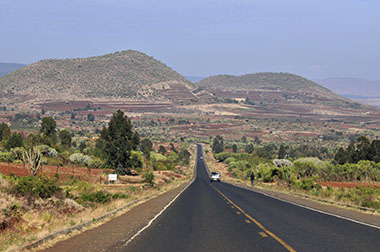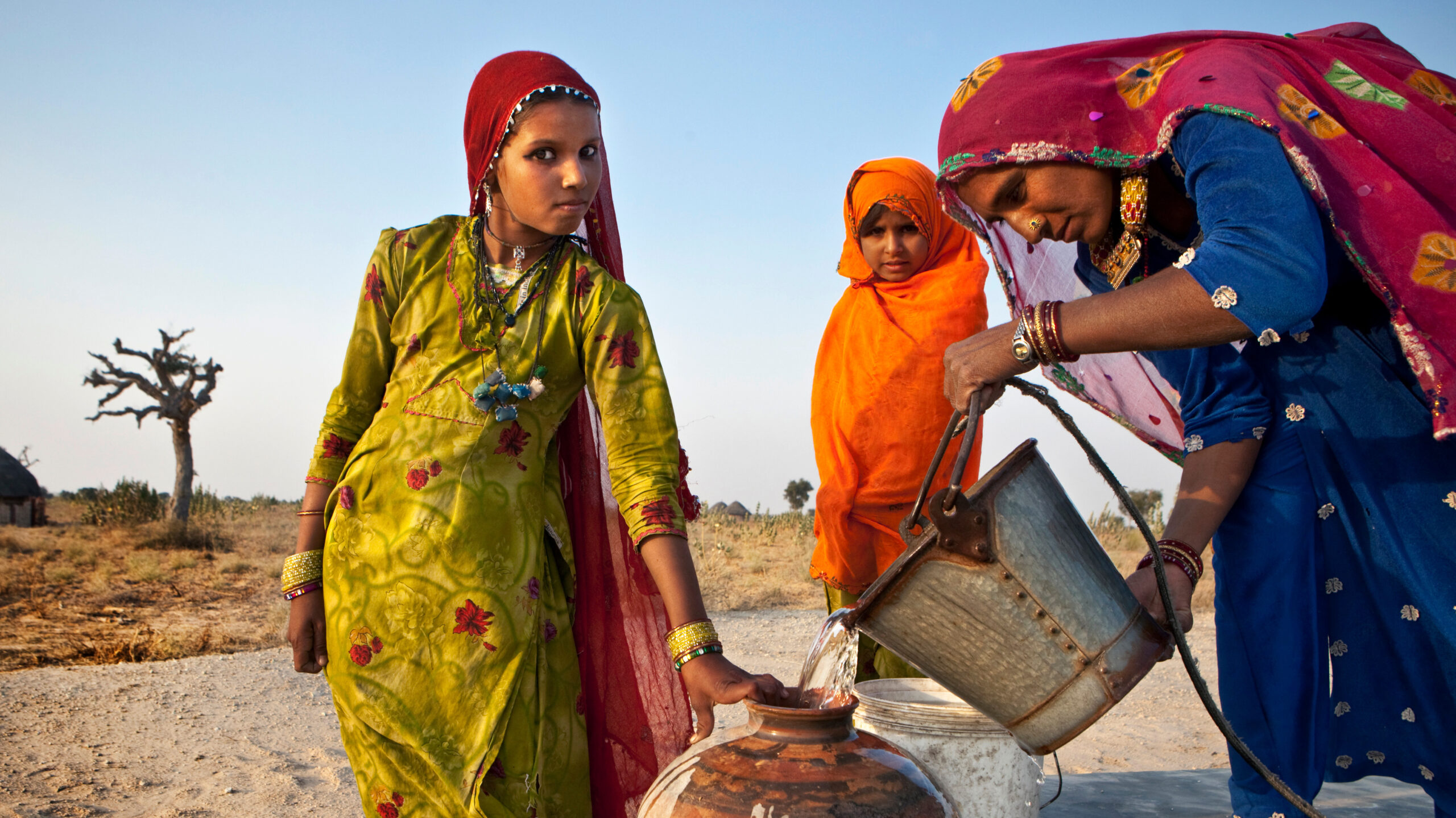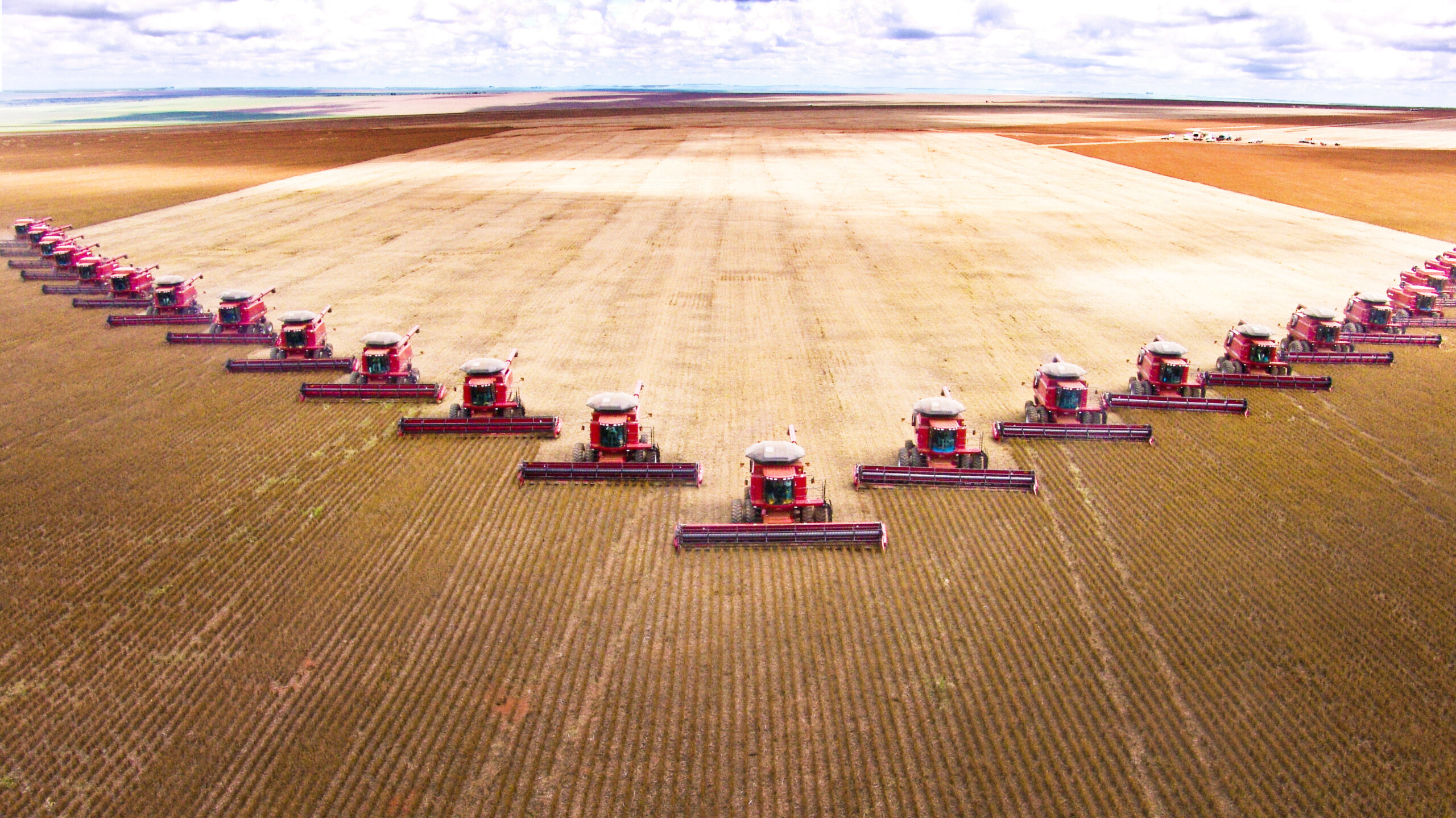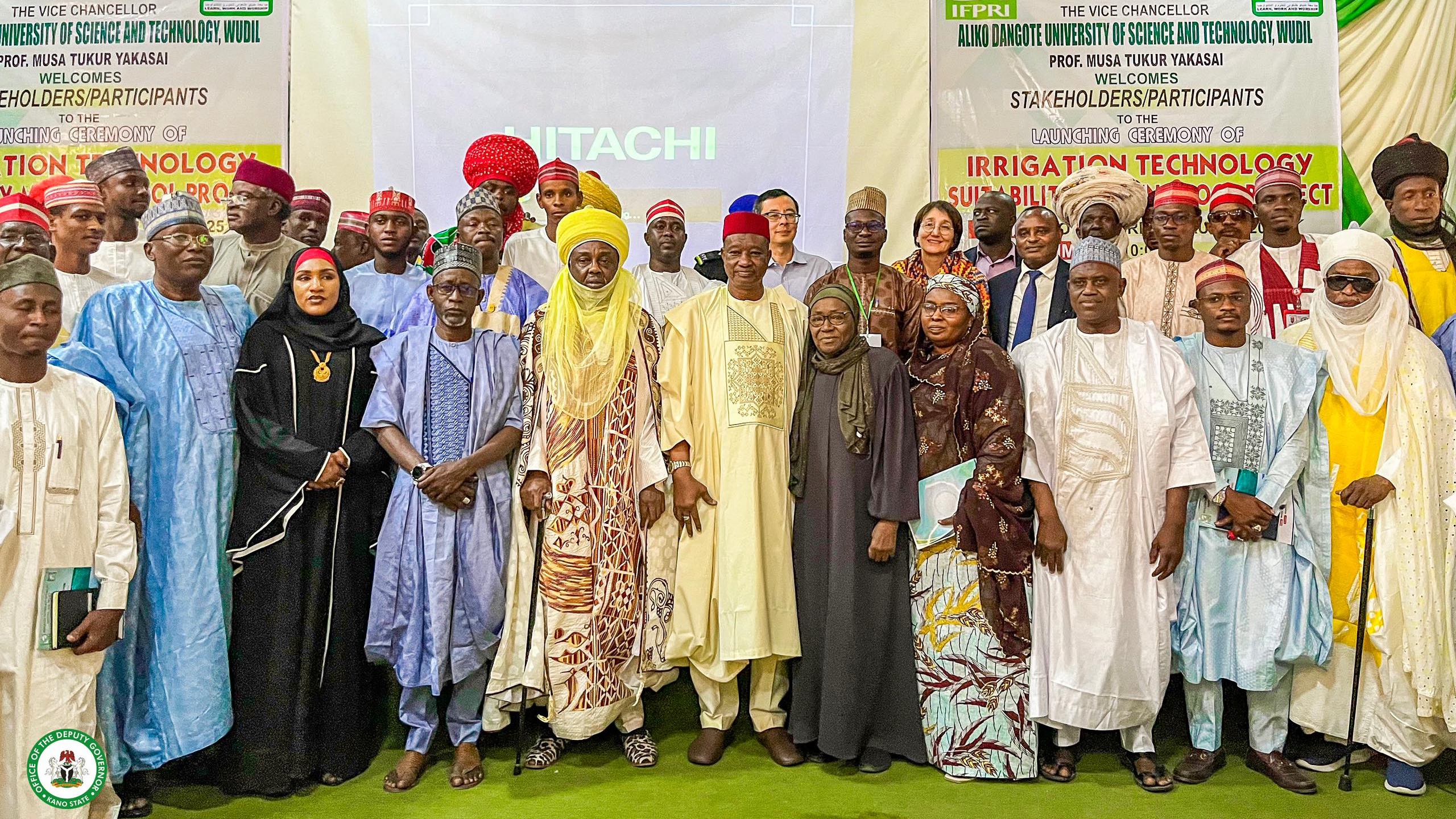The following blog story was originally published on the CGIAR Research Program on Policies, Institutions, and Markets (PIM) website.
Sustainable growth and inclusive rural transformation require provision of key public goods and services, all of which cost money. Managing competing claims for resources within the budget process and assuring execution of budgets as planned are major challenges for all governments. Governments in poor countries face particularly hard choices in public expenditure due to scarcity of resources, proliferation of priorities, and strong pressures by advocacy groups. PIM works at a number of levels to provide guidance on decisions that national, regional, and local governments make on spending priorities. We’ve asked Tewodaj Mogues, Senior Research Fellow at the International Food Policy Research Institute (IFPRI) who leads PIM’s research on public expenditure, to answer a few questions about her work.
What is happening now with public spending on agriculture? Are you seeing trends toward more spending or less? Are the trends different by region? Are particular categories of spending growing, and others declining?
Public expenditures as a whole have seen a long-term increase over the past decades. Even when considering spending in real terms, and in per capita terms (i.e. adjusting for population growth), public spending per person went up from about $1,900 in the 1980s to about $2,450 in the 2000s. This increasing trend holds both for developing and developed regions. Very recent evidence on what this has meant for agricultural public expenditures, as well as evidence on a range of other research questions concerning public expenditures in and for agriculture in the developing world, have been brought together into a Special Issue of the European Journal of Development Research, edited by myself together with Shenggen Fan (Director General of IFPRI), and Samuel Benin (Research Fellow in IFPRI), with articles contributed by various authors.
Public resources allocated to agriculture have increased alongside total spending. However, this is less good news in terms of public support to agriculture than it initially seems. Firstly, agriculture spending has not kept pace with the total increases in budgets: resources allocated to agriculture have been growing more slowly than resources overall. Secondly, the growth in agricultural budgets is not reflected across all regions, especially where this support would be expected to be needed. The global growth in agricultural budgets is in fact driven by the spending growth in developing regions that have been growing successfully over the past decades. For example, the East Asia and Pacific region saw its real per capita agricultural expenditures increase seven-fold from 1980 to 2010, and South Asia nearly four-fold. In contrast, Africa south of the Sahara saw a decline by 25%. Latin America and the Caribbean saw an even larger decline, though it should be noted that this region has been urbanizing at a rapid rate in the thirty-year period. But more needs to be understood regarding what the public money spent on agriculture is in fact financing, so that we have a sense of whether productive, or else less useful, investments are being made. To-date there are no systematic data that decompose agricultural expenditures by functions (such as irrigation, extension, research) or by subsectors (such as crop, livestock, fishery), except for individual country case studies. Future work under PIM will consider expanding the current major IFPRI/PIM dataset on public expenditures—SPEED (which stands for: Statistics on Public Expenditures for Economic Development)—to include this kind of disaggregation.
In your opinion, what type of public expenditure is more productive? In what ways is it more productive? Do you observe any recent trends toward these more productive ways to spend public money?
A large body of work has shown that public expenditures on agricultural research and development (R&D) generate very high returns—not only in boosting agricultural productivity, but also in contributing to broader welfare outcomes, such as the reduction of poverty, and improving nutrition security. Returns to R&D spending in many contexts exceed returns to other agricultural and non-agricultural expenditures such as on health, education, and irrigation, when we compare the benefits of the additional dollar for R&D to the additional dollar to these other activities. Agricultural research has a pronounced public-goods character: for example, the development of improved crop varieties is technological innovation, which can in principle be used by anyone. This public goods character is in part responsible for the high returns of R&D spending. Perhaps more importantly, in many parts of the developing world, there are significant gaps between agricultural productivity that could be achieved if the right technology is developed and applied and the levels of productivity observed. R&D investments have been helping to fill these gaps. Paradoxically, however, governments have been neglecting these types of investments. For example, in selected African countries for which analysis was undertaken, about 10-15% of agricultural public spending is on R&D, with the remaining 85-90% on other activities, including a big share on agricultural input subsidies. The good news is the trend over time: in the past decade, R&D has received more than a 40 per cent increase in government funds across Africa south of the Sahara.
African countries agreed in 2003 under the Comprehensive Africa Agriculture Development Programme (CAADP) to allocate at least 10 percent of public budgets to agriculture in order to achieve 6% growth in agriculture. What has been the experience with this commitment? Did countries do it? Did they achieve the target growth?
It is worth mentioning that the CAADP guideline for African countries to spend 10% of their budget on agriculture has been somewhat embattled, for example because the uniform guideline does not take into account heterogeneous conditions across countries, such as their degree of urbanization, or the contribution of non-agricultural expenditures (such as, rural road infrastructure) to agricultural growth. The 10% standard was however meant to motivate spending from an extremely low base. As recently as in 2010, i.e. seven years after the Maputo Declaration setting the guideline, Africa south of the Sahara spent only 3% of total expenditures on agriculture, and all of Africa – only 3.9%. This does mask a lot of variation across countries. For example, in 2010, the share in Malawi was as dramatic as 29%, while Equatorial Guinea’s share was only half a per cent. Out of the 47 countries for which data are available, only 10, or about one-fifth, met the target. So, a short answer to the question “Did the countries do it?” is no, for the most part they didn’t. Although the agreement on the spending target was reached in 2003, it wasn’t until 2010 that most countries developed their CAADP National Agricultural Investment Plans. PIM researchers are currently collecting more recent data to check if the situation has changed in subsequent years. As for the target to achieve 6% agricultural GDP growth, given the high volatility of growth rates from year to year, it is more appropriate to look at the average annual growth rather than that for any single year. Analyzing data from 2008 to 2014, we find that Africa has not achieved this goal: it reached only 2.6% on average. The only sub-region that achieved 6% growth rate was Eastern Africa. All other regions—Central, Northern, Southern, and Western Africa—did not, and in fact Western Africa saw a decline in agricultural GDP by nearly 1.5%. Unfortunately, the trend has not been in the right direction: the Africa-wide growth rate of 2.6% is in fact a decline from the annual average for the period 2003-2008 of 3.7%.
In one of your recent papers, you call the country-level public expenditure statistics a “black box”. Could you explain why and how you unpack the “black boxes”?
Agricultural public expenditure statistics can really feel like a black box, because it is often not clear what goes into producing these statistics. One becomes particularly aware of this when one comes across various sources of statistics on agricultural spending, and finds strongly differing figures on what seems to be the same variable for the same year and same country (and thus should yield the same result). In a forthcoming (in 2016) systematic review of all data initiatives that have data on agriculture public expenditures in developing and emerging countries, I show just how drastically figures can vary depending on which data source one consults. My colleagues and I recently produced a series of African case studies (for Ghana, Kenya, Malawi, and Mozambique) examining how governments report and record their public expenditure data. Our analysis proposes a method how classification and coding systems of government public accounts can be used to reconstruct agricultural public expenditures. The classification system usually points to a consistent pattern of code assignments for different types of spending (e.g. by function, economic use, level of government, etc.). We have conducted training on how to use this method for colleagues in Malawi, and there is definitely scope for more capacity building in this area.
Does public spending have implications for gender equality? Do different types of spending affect men and women differently? Which types of spending matter most for poor rural women?
The answer to these questions is a bit disheartening: We don’t really know. Very little rigorous research has been conducted that identifies the causal effects of different types of agricultural and other public expenditures or budget allocations on women’s welfare, agricultural productivity, and other gendered outcomes. One can perhaps glean indirect evidence, through the plethora of studies that examine the impacts of specific development interventions on women’s and men’s wellbeing, their access to assets, etc. However, this is different from directly considering the returns to alternative public expenditures by gender. Clearly, this will need to be a central line of research in PIM’s body of work on public expenditures in the future.
Are governments receptive to evidence on public expenditure? In your experience, what is the best way to present such data so that they have impact on actual allocations? When we contrast existing evidence with existing resource allocation practice, it doesn’t, unfortunately, reflect well on our (researchers’) level of success in influencing policy. For example, the body of work showing very strong returns to agricultural research, as well as the number of studies showing the questionable record of subsidies in contributing to sustained agricultural growth, are both significant and large. Yet, subsidy spending continues to make up the lion’s share in agricultural budgets, while R&D investments remain small. As a starting point, the research community needs to gain a better handle on what drives resource allocation decisions, by appreciating the political economy of public investments. The above mentioned Special Issue offers a review of evidence on these factors, and other recent analyses on agriculture and nutrition investments offer empirical case studies.
More generally, researchers need to think not only about how to present data to policymakers, but also in whose hands to place it. We need a better understanding what makes public officials pay attention to our findings. In countries with vibrant and widely reaching media, we probably need to make more effort in using them to present our evidence. National farmers’ associations can be another strong ally in promoting research evidence and influencing political actors, but the evidence must reach them timely and in an accessible format. These innovative and potentially more effective approaches might require that researchers step out of their comfort zone and learn new ways of communicating their research.
What was the best recommendation you’ve ever given on public expenditure? The one that, in your opinion, made a real difference. One of the big studies that my colleagues and I conducted was analysis of agricultural public expenditures at the federal, state, and local levels in Nigeria (see Chapter 4 in this book, and this 2014 IFPRI Discussion Paper). Based on those, we recommended an increase of agricultural spending on all three levels. We particularly suggested that the state and local governments should increase internally generated revenue to reduce overdependence on allocations from the federation account. We also suggested that to improve the overall budget process, all three tiers of government should dramatically improve collaboration in agricultural development agenda setting. The Federal Ministry of Finance in Nigeria used the findings of this study in their dialogue with donors regarding US$ 100 million grant to support policy reform of the Nigerian agricultural sector. The activities financed by the grant include support to the Ministry of Agriculture’s Department of Finance and Accounts in implementation of the action plan based on the agriculture public expenditure review. How this will continue to play out will need to be seen: Policy processes can be lengthy and complex, and various major external developments—such as, in Nigeria, a change of administration through elections—will likely exert major influence on the direction of policy and investments in the country. Making a difference through evidence requires sustained engagement and interaction with the country’s stakeholders, even well after a study has been finalized and published.







